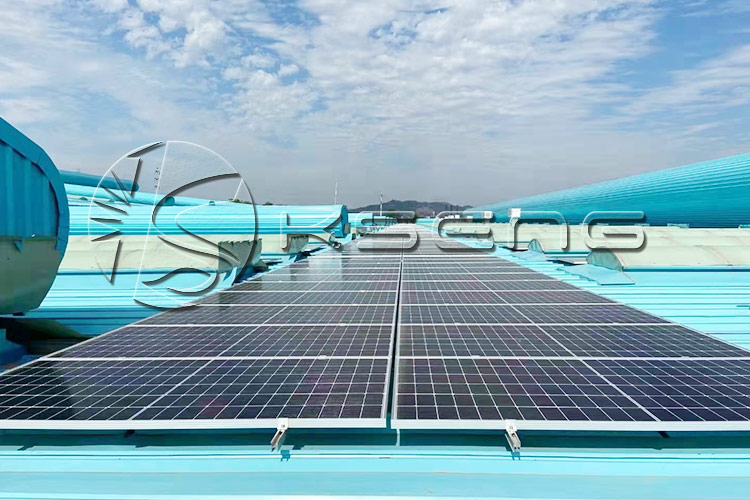Choosing the right kind of solar mount system is an extremely important part of your solar design process. The right mounting system will accomplish two main goals; collecting the most sun possible by facing your panels on the correct angle and direction and by reducing or eliminating the amount of shade that prohibits sun from hitting your panels.
Other things to consider are aesthetics; do you want to see the panels or not? As well as the condition of your roof and the space you have available. There are three main types of solar panel mounting systems; roof mount, ground mount and pole mount. Here we will help you decide which is best for you.Today we are going to talk about roof installation.

Solar Panel Roof Mounting System
The most common mounting system for a solar panel system is a roof mount system. A top consideration when deciding where to locate your panels is the condition of your roof. Solar energy systems are designed to last over 30 years, you should make sure your roof is up to the task of housing them.
Due to the pitch, the lack of shading and having the panels mounted out of sight, the roof is the most popular location for your new system. Before getting ahead of yourself with a new solar system make sure your roof is in fair enough condition for mounting them. The last thing you will want is to have to temporarily remove your panels in 5 years to repair or replace your roof.
With a good installer helping you through the process this should not be a concern and any professional solar company will advise you on the state of your roof and any issues it may create in the future. If your roof needs to be repaired or replaced be sure to calculate the cost into your return on investment.
Solar panels collect light from the sun and convert the energy captured to electricity. The more sun that hits your panels and the more panels you have, the more electricity you will produce. Ideally you want your solar panels to face due-south.
The angle of your panels depends on the time of the year and your geographic location. During the winter months (November through February) the sun is very low on the horizon, therefore the optimal angle to capture the most sun will be higher than the summer months (May through July) where the ideal pitch for your solar panels lower, or nearly flat due to how high the sun is in the sky.
why are we talking about all of these optimal degrees, averages and peak sun? The more sun the more power. But don’t be discouraged. If you are like the majority of potential American solar system owners, you don’t have a perfect roof pitched facing due-south. For example, if your roof has a 20 degree pitch and is facing west you can expect loses equal to just a fraction of an hour per day.
Even better, if you have a less than ideal roof you can consider fixing your panels on a ground-mount system or simply add more panels to make up for losses in production and still cover your electrical use.
Shading is the next big factor when choosing a location for your panels and deciding just how much electricity they will produce in the space provided. It is imperative to consider not only current shading but shading that may occur in the future. Just one electrical cable casting a shadow on one of your panels can greatly reduce the overall production of your solar array (the collection of panels you have in your system).
Besides shadows cast from telephone poles, your chimney, peaks on your roof or other obstructions, remember to account for any trees that may grow in the future and make sure to trim them as necessary. If you live in an area that is particularly dusty it is also important you have access to your panels to hose off the dust or sand collected on the glass. Your solar panels are very durable so don’t worry about damaging them when hosing them down or wiping them off with a broom or squeegee.
There are several ways to offset less-than-ideal situations like those mentioned above. Shading and imperfect pitch can be offset by a custom mounting system or micro-inverters that convert each panels captured electricity independently from the panel next to it.
One thing that does not change is that solar energy, in general, is a big investment. Whether you are fighting to save our environment, trying to get on-board with utility incentives or preparing by storing your produced energy in a battery bank for the next Hurricane Katrina scenario; solar is going to cost you a good bit of money. Make sure you have considered the best mounting solution to match the longevity of your systems lifespan.
There are many reasons why your roof may not be the best solution for mounting your solar panels. Consider the accessibility of the panels for cleaning or removing snow (depending on your location) as well as orientation. Should your roof not be an ideal location to mount your panels there are other options.